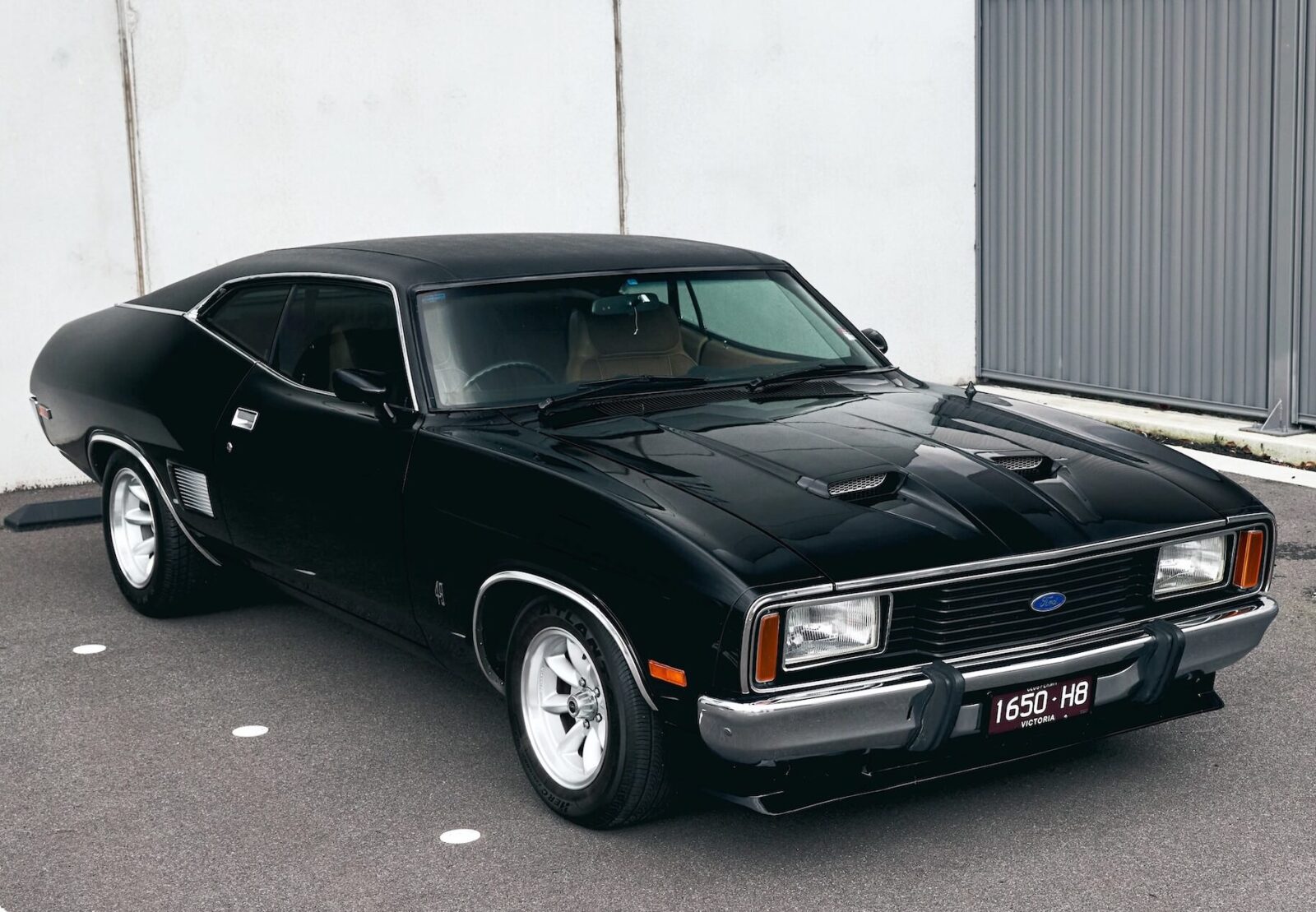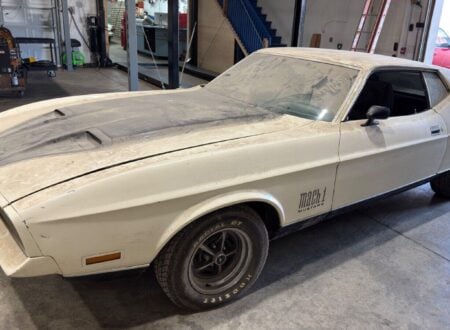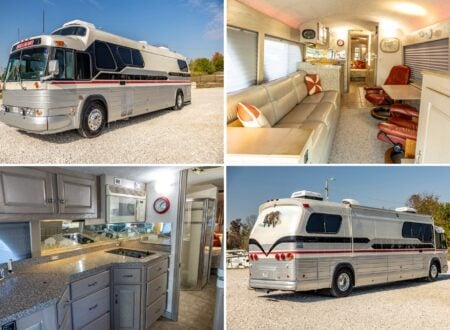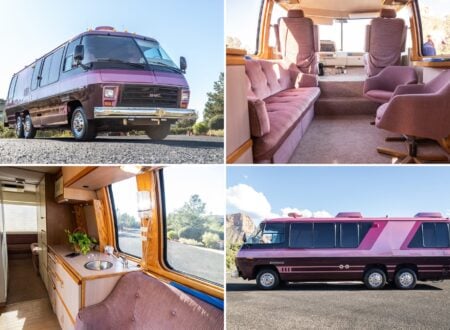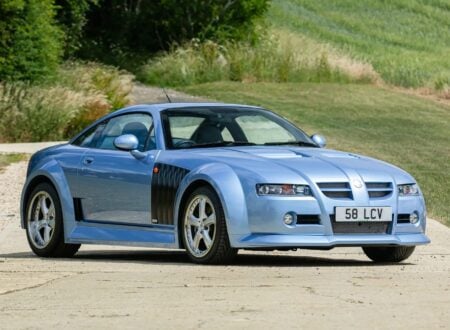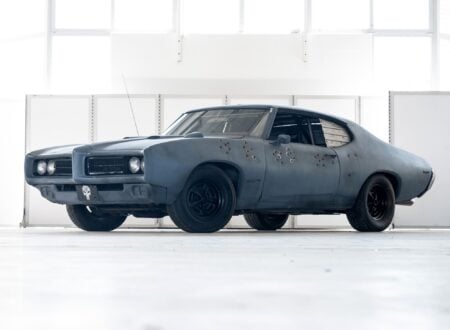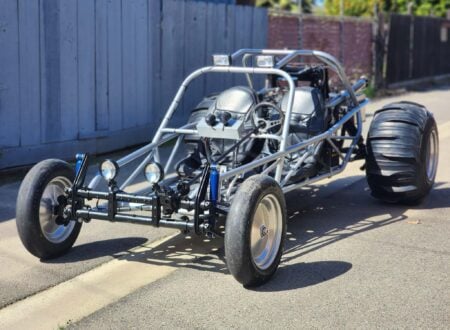This is a Ford XC Fairmont GS Hardtop, it remains largely unknown to the world, well unknown to the world outside of Australia that is, the nation that designed and built it back in the late 1970s.
The Ford XC Falcon would be the final version of the third-generation Australian Falcon model line. It was preceded by the XA and the XB, and during its time in production the coupe version was one of the top locally-produced sports cars in the country.
Fast Facts – The Ford XC Falcon
- The Ford XC Falcon was the final version of the third-generation Australian Falcon, produced from 1976 to 1979. It featured a distinctive “Coke-bottle” styling and was available in various body styles, including the popular “Hardtop” coupe. The XC Falcon received upgrades to comply with new anti-pollution laws and improve efficiency.
- Engine options included crossflow inline-six engines in 3.3 and 4.1 liter variants, as well as Cleveland V8s in 4.9 and 5.8 liter sizes. Transmission choices were three or four-speed manuals, or a three-speed automatic. The XC Falcon is best remembered as the basis for the limited-edition Ford Falcon Cobra, inspired by the successful racing version.
- A total of 171,082 XC Falcons were produced, with four-door sedans being the most common. The Fairmont trim level offered a more luxurious fit out, quickly identifiable by rectangular headlights. Values of XC Falcon coupes have been increasing in recent years, despite many being lost to accidents, rust, and kangaroo strikes.
- The 1978 Ford XC Fairmont Hardtop you see in this article is for sale, it has a 302 cubic inch (4.9 liter) V8 engine, four-speed manual transmission, and extensive restoration. It has various original features and some period-correct modifications, including Performance Minilite alloy wheels and a lightly upgraded cam.
The Great Australian Falcons
The unmistakable Coke-bottle styling of the Ford XC Falcon coupe, called the “Hardtop” by Ford, had endeared it to generations of Australians. The “Hardtop” name used by Ford was perhaps a little confusing, as it hardtop coupe, but there was also a four-door sedan, a four-door station wagon, and a two-door panel van variant, all of which also had a hardtop.
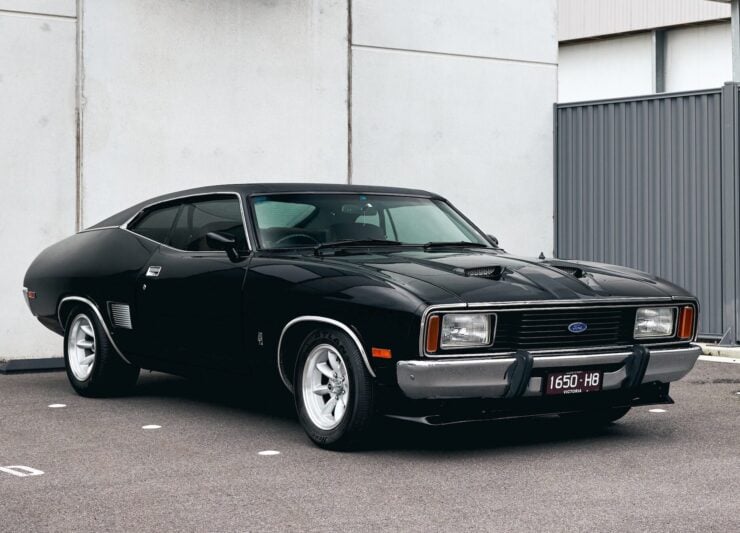

The XC Falcon would make its debut in 1976, it was very closely based on the earlier XA and XB Falcons, but it included a series of upgrades to comply with Australian Design Rule 27A – a series of mandatory anti-pollution laws designed to reduce vehicle emissions and improve fuel efficiency.
The key changes made were the addition of a crossflow head on the six-cylinder engine option for better efficiency and emissions, it was also given some minor visual upgrades to the front end, rearward visibly was improved, a new dashboard was used, and it had slightly higher front seats for better forward visibility.
Engine options for the XC Falcon included the crossflow inline-six which came in 3.3 and 4.1 liter variants. Buyers could opt for the larger Cleveland V8 which was offered in 4.9 and 5.8 liter variants. Transmissions included either a three or four-speed manual, or a three-speed automatic.
The Ford Falcon Cobra
To the casual observer, the XC looked almost indistinguishable from its two predecessors, and today it’s best remembered as the basis of the Ford Falcon Cobra. This was a street-legal version of the XC Falcon race car that had taken a dominant 1-2 formation finish at the 1977 Hardie-Ferodo 1000, a precursor of the modern Bathurst 1000 race held at Mount Panorama in Bathurst, Australia each year.
The 400 original examples of the Ford Falcon Cobra, with their distinctive body kit, white paint and twin blue center stripes, are now among the most prized Australian cars from the era.
Ford Australia produced many thousands of other XC Falcon coupes, the non-Falcon Cobra standard models, and these have seen their values climb steadily in recent years.
Above Video: This is the official highlight reel of the 1977 Hardie-Ferodo 1000, the race was utterly dominated by the Ford Falcon Cobra, with the cars finishing in a 1-2 formation.
Sadly, many have been lost to accidents, rust, neglect, and kangaroo strikes – the Australian marsupials have a bad habit of hopping out in front of cars on highways, typically resulting in their immediate death and a damaged car , sometimes with economically unviable repairs required.
The XC Falcon would remain in production from 1976 until 1979, a total of 171,082 vehicles would be produced in total, though only a relatively small percentage of these were coupes – with four-door sedans making up the bulk of production.
The Ford XC Falcon Hardtop Shown Here
The car you see here is a 1978 Ford XC Fairmont Hardtop – the Fairmont GS version of the XC which was marketed as being more luxurious than the base model. Interestingly, the Fairmont versions weren’t badged or marketed as being Falcons, though of course they were under their Fairmont badging.
The Fairmont trim level on the XC is most easily identified by the rectangular headlights, with most other variants getting either twin or quad circular headlights.
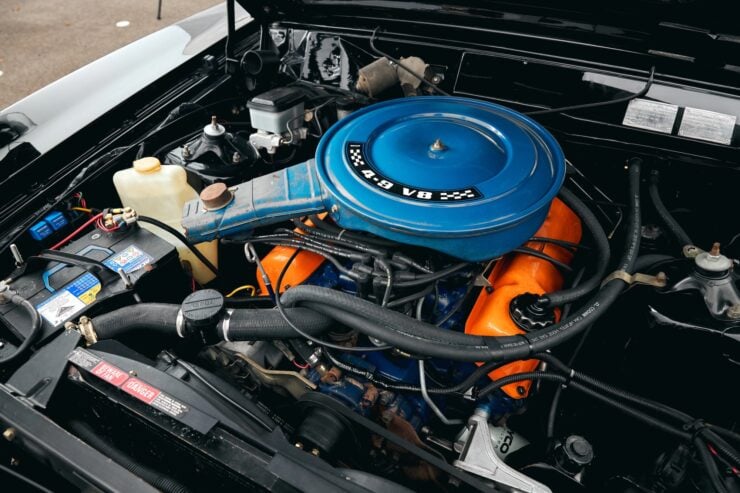

This particular car benefits from an extensive previous restoration, and it’s powered by the 302 cubic inch (4.9 liter) V8, which sends its power to the rear wheels via a four-speed manual transmission.
The four-speed manual is the most desirable transmission that was originally offered on this model, and it’s typically preferred over the three-speed manual or three-speed automatic.
The car is finished in black with a matching vinyl roof, it has an Ochre Saddle part vinyl and “houndstooth” cloth-trimmed interior, with a black dashboard, and chrome trim accents.
It now rides on non-original (though period-correct) Performance Minilite alloy wheels fitted with mixed tires, and it has a front chin spoiler, a lightly upgraded cam, and a heavy-duty clutch.
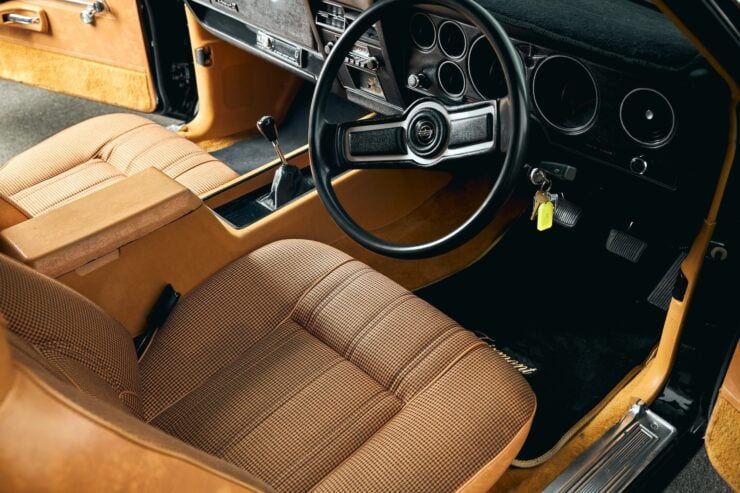

Original equipment incudes ram-air bonnet vents, a two-bar steering wheel, a heated rear screen, an analogue clock, a Ford-branded push-button radio, power steering, four-wheel disc brakes, and well as heater and ventilation controls.
It’s now being offered for sale by Collecting Cars out of Victoria, Australia. The car has 102,822 kms (63,900 miles) showing on the odometer and it’s currently registered and on the road. If you’d like to read more about it or place a bid you can visit the listing here.
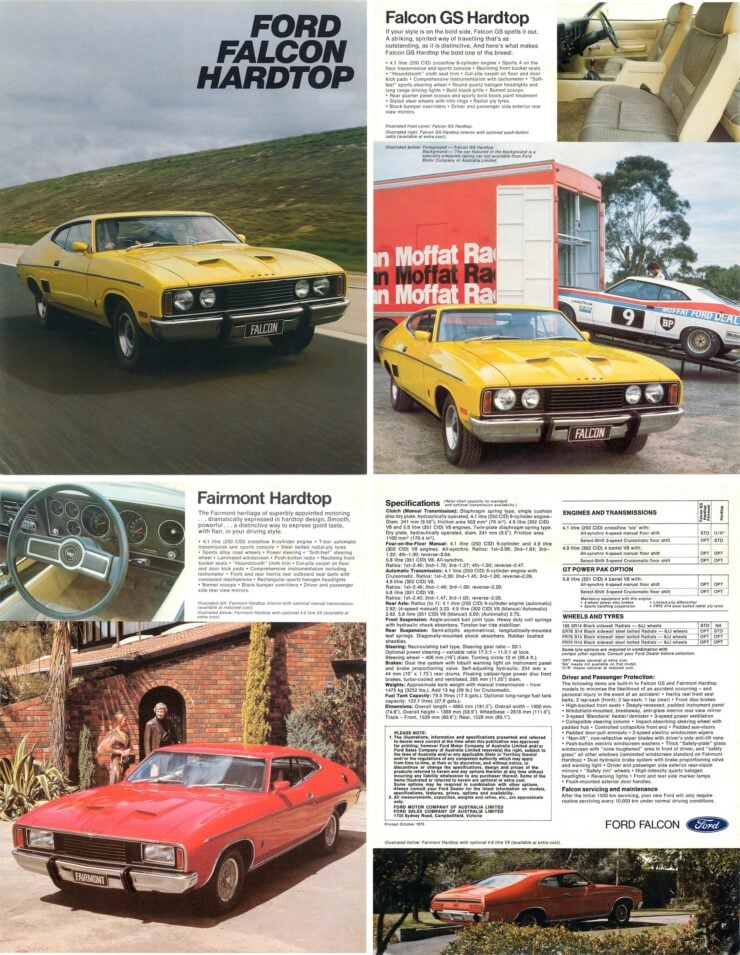
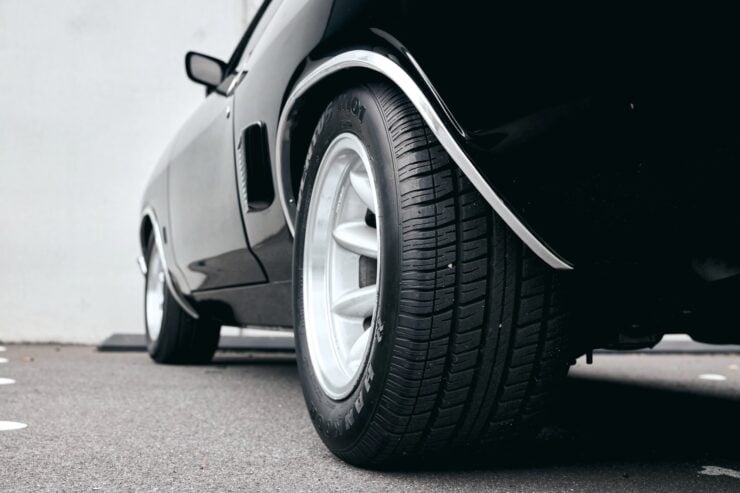
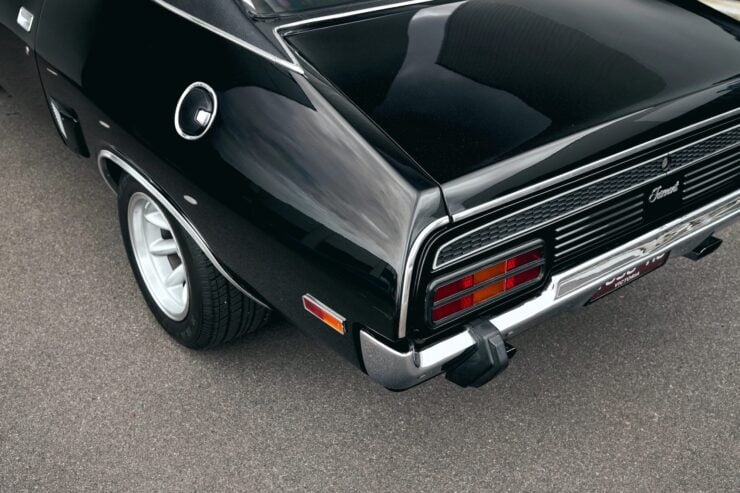
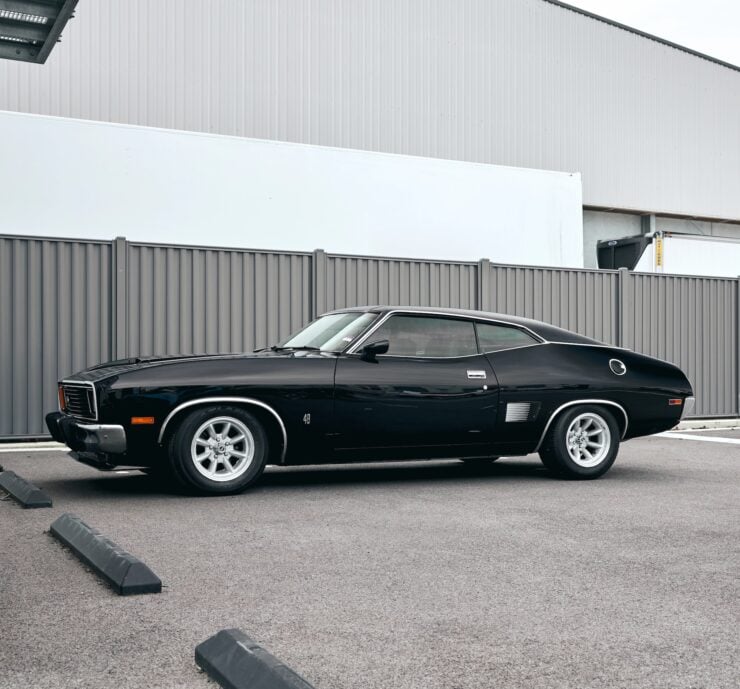
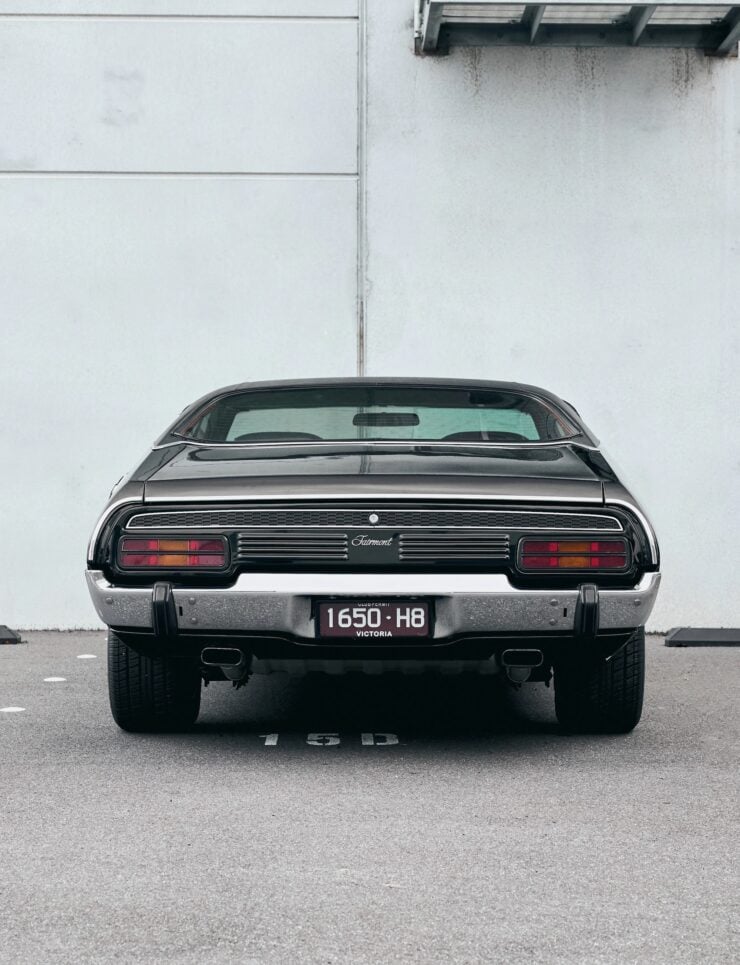
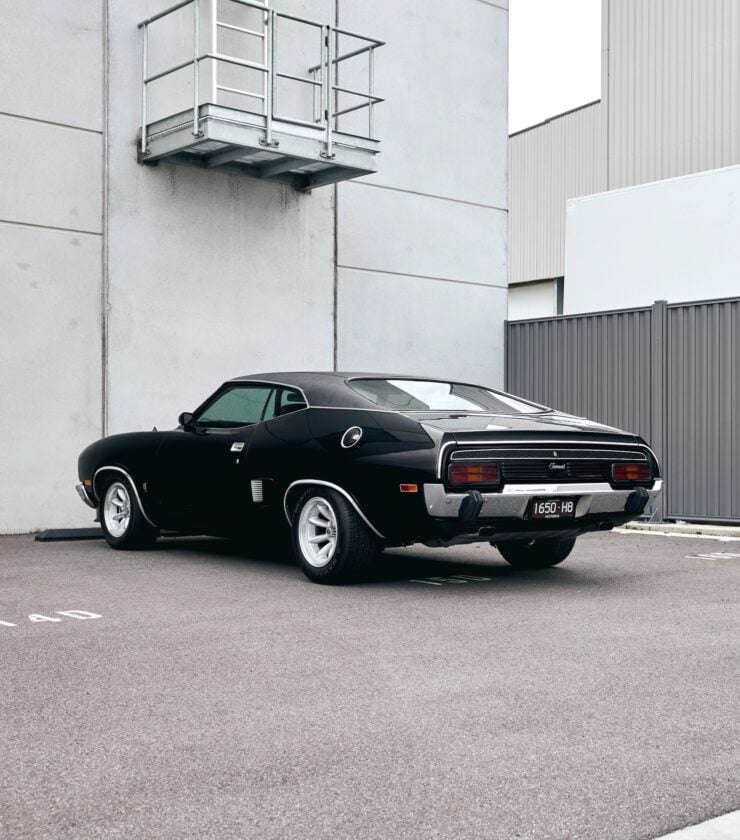
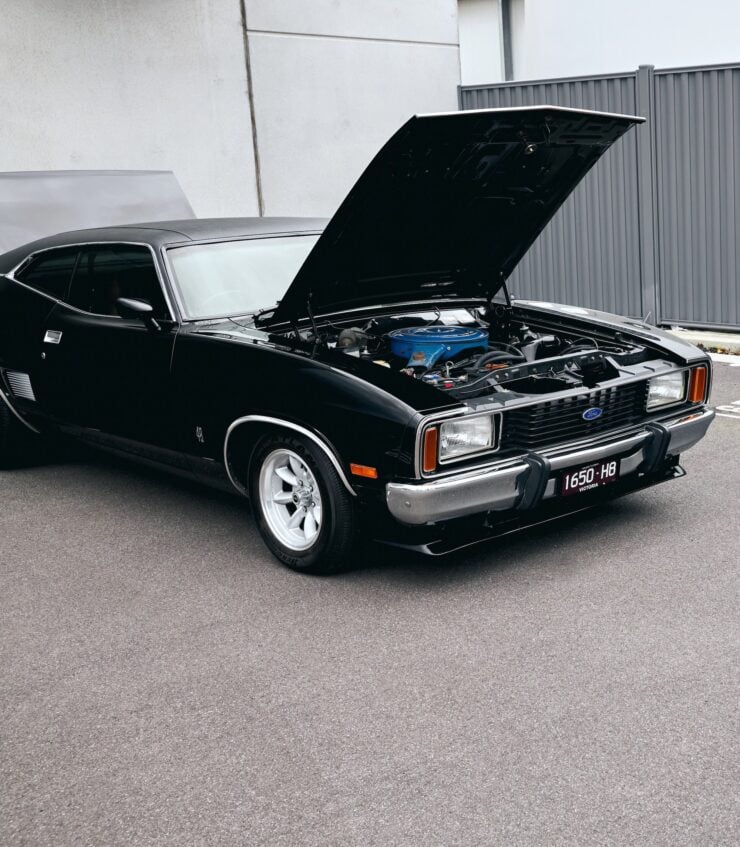
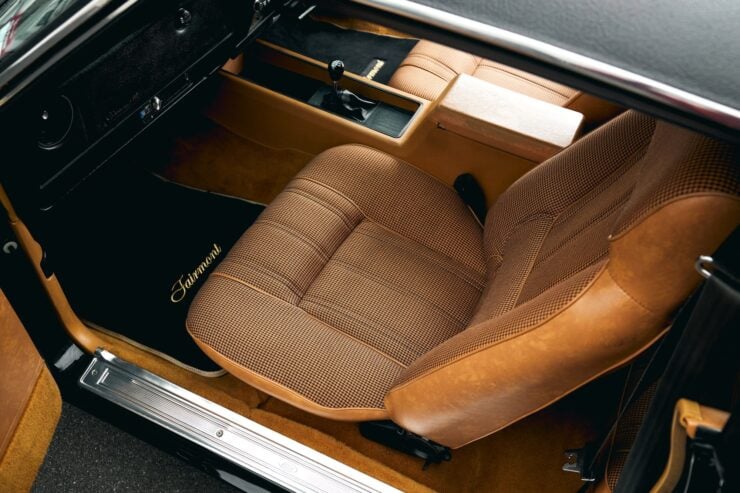
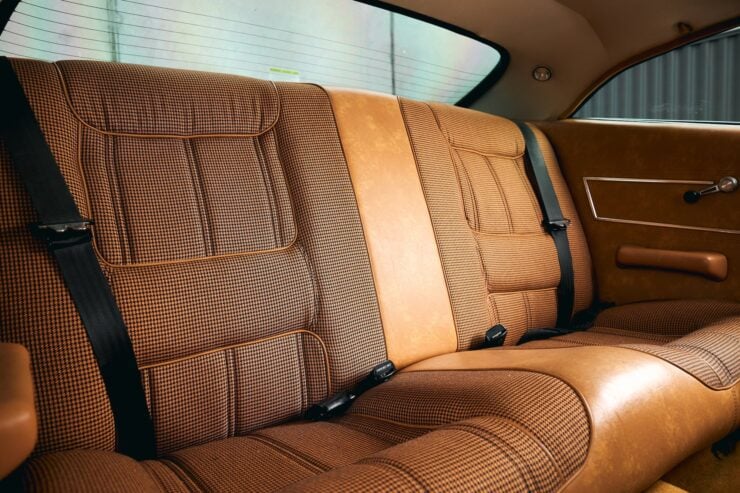
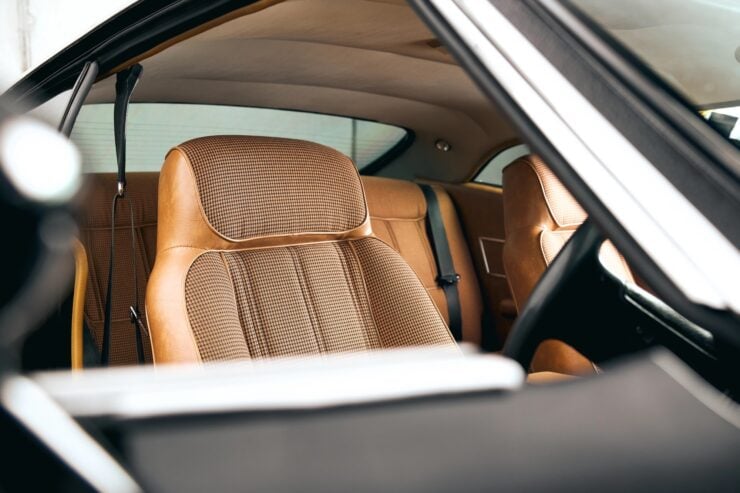
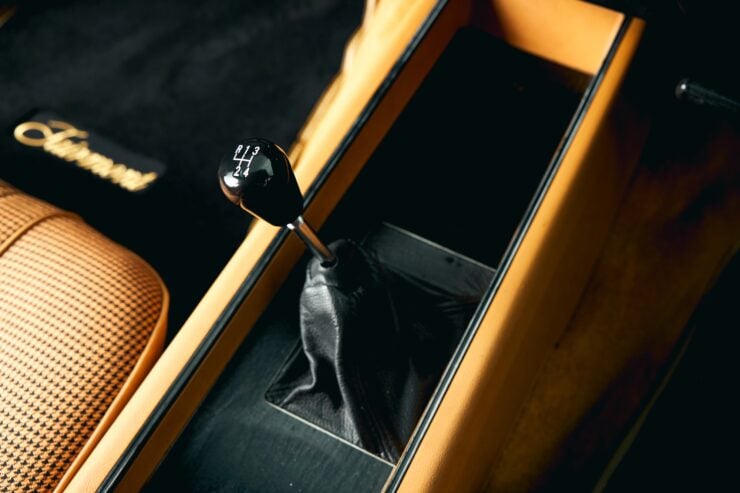
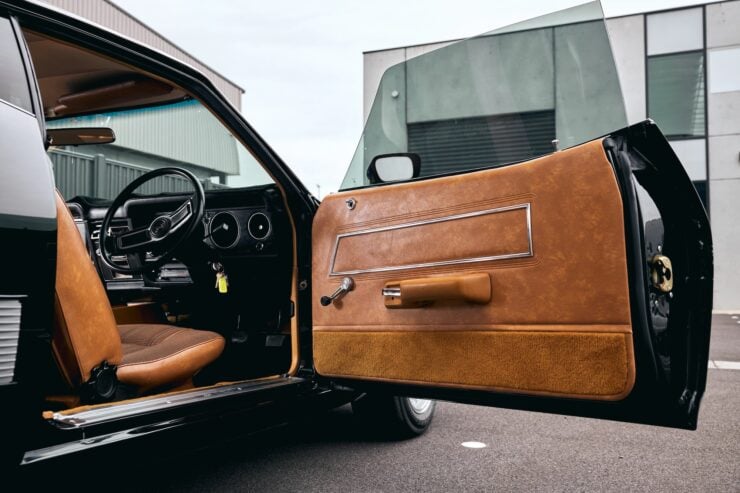
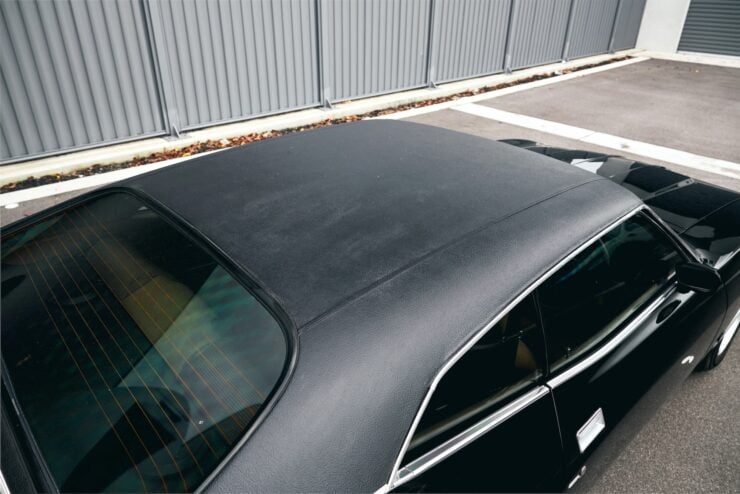
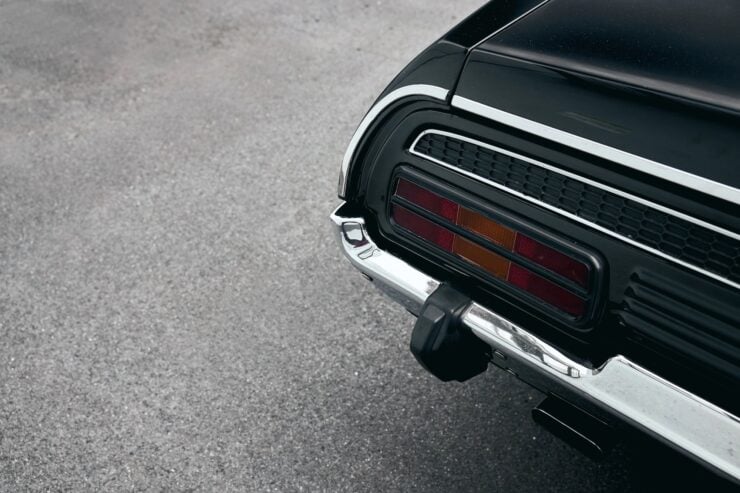
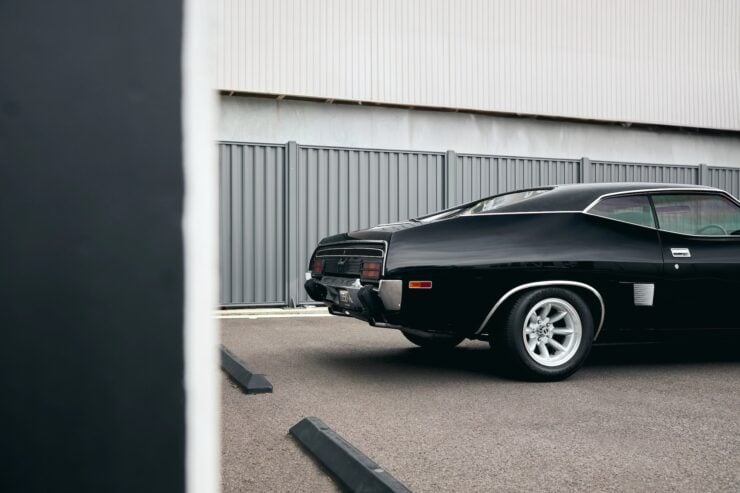
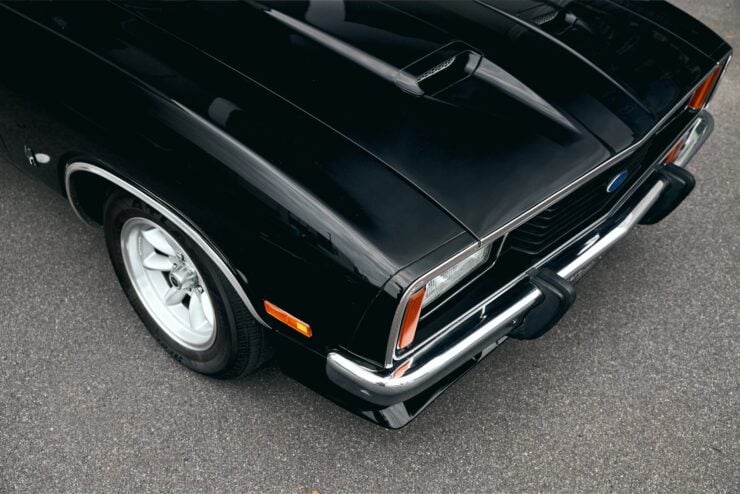
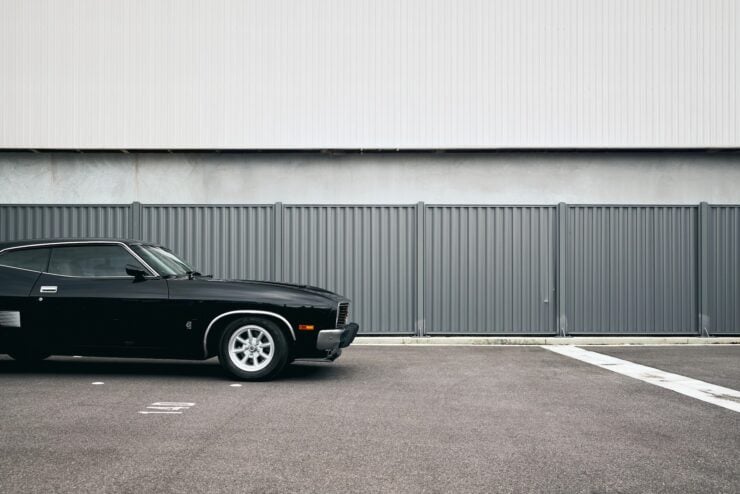
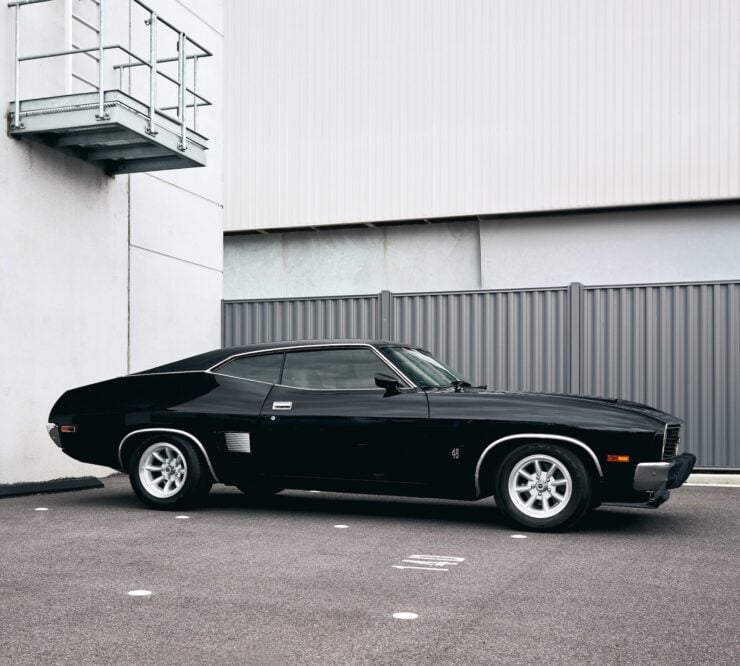
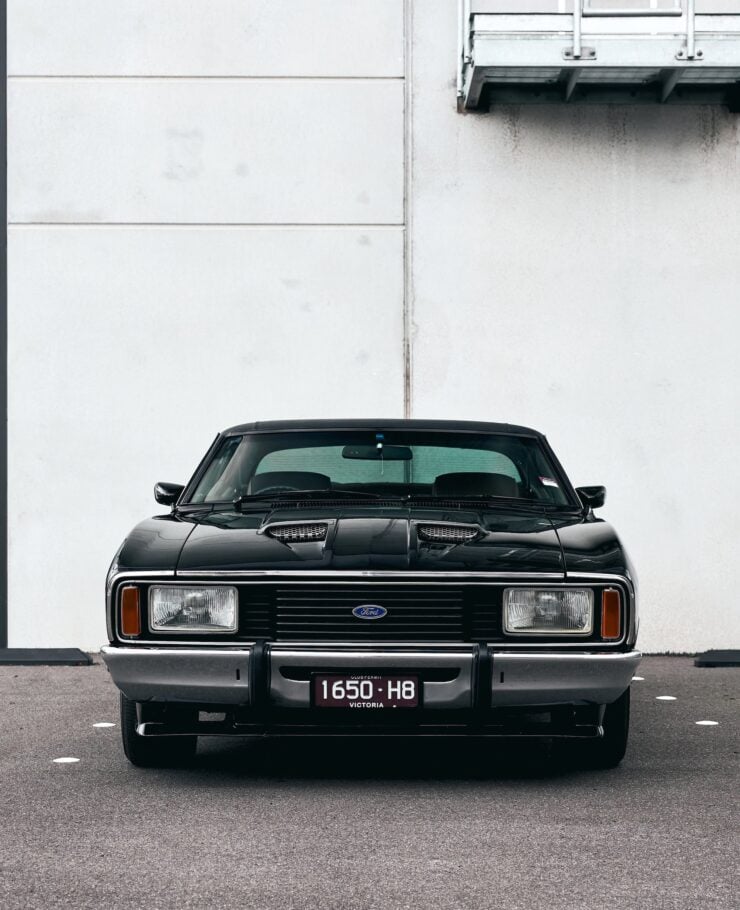
Images courtesy of Collecting Cars

